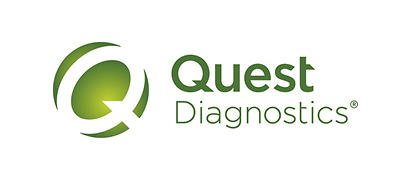
read time: 6 mins
HIT - Healthcare Information Technology & HIM - Healthcare Information Management, DMS - Document management system, ECM - Enterprise content management
Leverage your content management system to safeguard your most important assets
The following is a guest article by Jeff Lusby, Executive Director and General Manager, Healthcare IT at Quest Diagnostics, with contributions from Keith Johnson, Senior Corporate Counsel at Quest Diagnostics.
In healthcare, the focus is on patients—providing care, achieving positive outcomes, and delivering a superior customer experience. But that’s not all. Healthcare has an army of administrators who focus on managing the most important assets that come along with patients—the content that is created as part of this care journey.
The Association for Intelligent Information Management (AIIM) defines enterprise content management (ECM) as the "strategies, methods, and tools used to capture, manage, store, preserve, and deliver content and documents related to organizational processes. It’s the architecture that glues your documents and business content together—making them searchable, explorable, organized, and ultimately meaningful.”
Content management has become a critical component in healthcare and a multifaceted one at that. It involves people, processes, and technology that are organized into a greater strategy. And as organizations continue down the digital path and evolve their technology, the need for content management escalates.
So how do healthcare organizations operationalize content management into a sound governing strategy for people, processes, and technology? It’s an evolving initiative for most organizations, but it most often includes an ECM system along with a set of retention policies that serve as a living map to guide the lifecycle of content.
3 ways to incorporate a sound retention policy into your content management strategy
1. Create a matrix for each data type generated or captured
A key component of the digital content lifecycle is the retention policy that guides it. Healthcare organizations are tasked with executing retention policies for clinical and business content alike and must adhere to the more stringent federal or state requirements. To create a new retention policy or update an existing policy, the first step is to create a matrix for all data created or collected by your organization, for both patient and business-related content. This matrix can be used solely for guiding retention policies or could be used for much more—a true data map to track how each piece of content is created, where it is stored, who has access to it, which system(s) it is accessed in or sent to, whether it can be printed or released from these systems, where it is backed up, and so on. One key column of this matrix, however, must be the retention policy. How long must this data be retained before it is permanently destroyed? And how is the data to be destroyed? These questions need to be answered and the findings established as routine policy and practice for retention and destruction.
2. Follow and enforce your organization’s retention policies
An obvious principle for a sound retention policy is to follow it. Simple, right? Unfortunately, it’s not so simple. Constant monitoring is needed of the people, processes, and technology that access all the data that is governed. The risks of not following defined retention policies can be quite costly. Storage costs are always a consideration, but what happens if your organization maintains data longer than required and that data becomes part of a legal e-discovery process? That’s right. Your organization is responsible for providing the data within the expected time frame, which can be a very expensive process. Expert estimates for e-discovery costs range anywhere from $5,000 to upwards of $30,000 per gigabyte.1 E-discovery is also a process that requires coordination between legal counsel and IT to understand the location, access, and added protections for certain data types to fulfill requests according to legal schedules. It’s an intricate process that involves internal and external resources and technologies that all add up to a hefty cost that, in some cases, could be avoided by following defined retention policies.
3. Inform and educate your people, processes, and technology
Once your organization’s retention policies have been defined or updated and you have a strong governance program in place, it’s imperative to educate people on the processes and technologies that play a role in upholding these content management strategies. Leverage routine education opportunities during staff trainings, meetings, celebration weeks, and more. There’s no such thing as too much training, and it very much becomes a pay-now-or-pay-later paradigm. Use real-life examples to outline e-discovery requirements and the litigation process and players. Outline the procedure to be followed in the event of a policy violation.
Content management strategies evolve
Now that your content management strategy includes sound retention policies, work to keep them current. Collaborate with the appropriate resources to complete a regular audit of your retention policies per data type. A regular audit will help refine and strengthen your retention policies and ultimately your content management strategy. If there are policy violations, learn from them and update policies where needed to be better prepared for the next time. Because that’s what content management is all about—helping people, processes, and technology evolve to best support organizational needs.
Quanum® Enterprise Content Solutions (ECS) is an enterprise content management system designed to help hospitals, health systems, and large ambulatory groups drive operational efficiency. A patented, supervised machine learning capability automates the capture process and is capable of transforming structured and unstructured data into searchable and shareable content. With it, you can better capture, store, access, share, and manage content across your enterprise.
Quanum ECS provides a Document Retention toolkit for organizations to configure and apply facility and document-specific retention policies and deletion requirements for digital documents stored within their Quanum ECS system. The toolkit provides the flexibility organizations need to adhere to the most stringent retention regulations.
With Document Retention, organizations can:
- Tailor retention period requirements for both clinical and nonclinical documents
- Execute document-specific policies and overrides
- Record a certificate of destruction for tracking and auditing purposes
- Send outbound messages to other key systems for full circle notification
- Audit key events related to the creation and execution of retention policies
- Safeguard documents from e-discovery or security risks
If you'd like to learn how Quanum ECS can assist your organization in achieving content management goals, let's connect.








